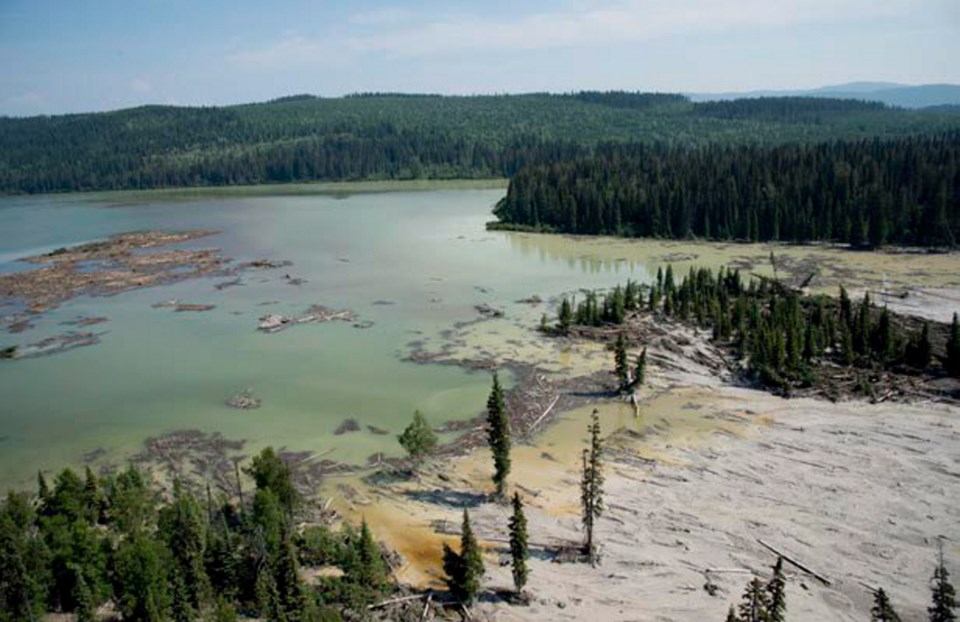VANCOUVER — Imperial Metals’ estimate of the size of the spill from its Mount Polley mine-tailings dam collapse is nearly 70 per cent greater than the initial estimate.
The B.C. government has estimated that 10 million cubic metres of water and 4.5 million cubic metres of finely ground rock containing potentially toxic metals was released by the collapse of the dam on Aug. 4.
But Imperial Metals has estimated the size of the spill at 10.6 million cubic metres of water, 7.3 million cubic metres of tailings and 6.5 million cubic metres of “interstitial” water. That’s enough water and material to fill nearly 9,800 Olympic-size swimming pools.
Interstitial water is the water suspended in the spaces between the finely ground rock of the tailings.
“It’s a bit disconcerting — it speaks to the crudeness of the initial estimate,” said Mining Watch Canada program director Ramsey Hart of the increased spill estimate.
Imperial Metals did not respond to a request Wednesday for comment.
Hart said there will need to be a better accounting of the spill, including the volume of tailings deposited in the lake and in the Hazeltine Creek watershed.
The early numbers were best estimates, later refined by Imperial Metals, B.C. Mines Ministry spokesman Ryan Shotton said in a statement.
“The company is undertaking work to fully characterize the chemistry of the tailings and water that have been released. This work will include testing for a full suite of parameters, including metals,” the statement said.
University of B.C. mining engineering professor Scott Dunbar said he doesn’t believe there would be a significant difference in the composition of the interstitial water and the water above the tailings in the storage facility. The company has said the water above the tailings was near drinking-water quality.
Dunbar said that while the tailings have been physically damaging, the science suggests they will not be chemically damaging.
That’s because the tailings are not acid generating, said Dunbar, the head of UBC’s Norman B. Keevil Institute of Mining Engineering.
Acid-generating rock is a problem for the environment because the sulphides in rock release the metals in minerals trapped in the rock, he explained.
“But they have to go through every square metre, or square five metres [of the spilled tailings], and check to see if this in fact is the case,” added Dunbar. “And if that is the case, and it’s not damaging, then the cleanup could be reshaping the landscape, reseeding. In the extreme, it’s removal. And that will be expensive.”
The rush of water and tailings scoured Hazeltine Creek and poured the water and some of the tailings into Quesnel Lake. Coho salmon and rainbow trout spawn in Hazeltine Creek. Some of the water and tailings also entered Polley Lake, a small lake adjacent to the mine site.
Provincial water tests continue to show the water in Quesnel Lake meets drinking guidelines.



